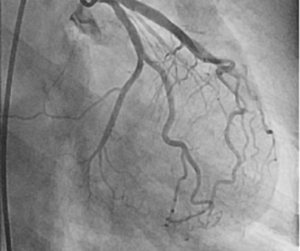Introduction:
In the ever-evolving landscape of medical technology, healthcare professionals continue to rely on cutting-edge tools and devices to provide the best possible care to their patients. One such instrument that plays a pivotal role in the critical care setting is the Swan-Ganz catheter. This unassuming device, named after its inventors Jeremy Swan and William Ganz, has revolutionized the way we monitor and manage patients with cardiovascular and pulmonary conditions. In this article, we will delve into the uses of the Swan-Ganz catheter, what it measures, and why correct zeroing is paramount for obtaining accurate and meaningful data.
The Swan-Ganz Catheter: A Brief Overview
The Swan-Ganz catheter, also known as a pulmonary artery catheter, is a flexible, thin tube inserted into a patient’s pulmonary artery. Its primary purpose is to provide real-time data on a patient’s hemodynamic status. This means it helps healthcare providers assess how well the heart and lungs are functioning, making it an invaluable tool in critical care units, operating rooms, and other high-stress medical environments.
What Does the Swan-Ganz Catheter Measure?
The Swan-Ganz catheter provides a range of essential hemodynamic measurements, including:
1. Cardiac Output (CO): This measurement quantifies the volume of blood pumped by the heart per minute. It is a crucial parameter for assessing cardiac performance and identifying conditions like heart failure.
2. Pulmonary Artery Pressure (PAP): The catheter measures both systolic and diastolic pressures in the pulmonary artery, offering insights into the pressure the right side of the heart must overcome to pump blood into the lungs.
3. Central Venous Pressure (CVP): CVP represents the pressure in the vena cava and/or right atrium of the heart. It helps clinicians gauge the patient’s fluid status and the heart’s ability to return blood to the lungs.
4. Pulmonary Capillary Wedge Pressure (PCWP): PCWP is an indirect measure of left atrial pressure and serves as a proxy for left ventricular function. It’s vital for diagnosing and managing conditions like congestive heart failure.
5. Systemic Vascular Resistance (SVR): SVR reflects the resistance the heart must overcome to pump blood into the systemic circulation. It’s a key parameter in assessing afterload and vascular tone.
The Crucial Role of Zeroing
While the Swan-Ganz catheter provides a wealth of information, its accuracy hinges on proper zeroing. Zeroing is the process of calibrating the catheter’s pressure measurements to atmospheric pressure. Here’s why it’s crucial:
1. Baseline Reference: Zeroing establishes a baseline reference point for pressure measurements. Without proper zeroing, all subsequent readings are essentially meaningless.
2. Accurate Diagnosis and Treatment: Incorrectly zeroed catheters can lead to misdiagnosis and inappropriate treatment decisions. For instance, an erroneously high PCWP reading might prompt interventions that a patient does not need.
3. Patient Safety: Inaccurate pressure measurements can compromise patient safety. Administering medications or fluids based on incorrect readings can have serious consequences.
4. Quality of Care: Proper zeroing is fundamental to providing high-quality care. It ensures that healthcare providers have the most precise and reliable data at their disposal to make informed decisions.
Zeroing the Swan-Ganz Catheter: Best Practices
Zeroing a Swan-Ganz catheter is a meticulous process that should be performed with utmost care. Here are some best practices:
1. Ensure a Level Transducer: The transducer (the device that measures pressure) should be at the level of the phlebostatic axis, typically at the fourth intercostal space mid-axillary line. This ensures accurate measurement of CVP and PCWP.
2. Zero Before Each Measurement: Before recording any pressure, it is imperative to zero the catheter to atmospheric pressure. This ideally should be done before every pressure measurement to account for any fluctuations.
3. Use Sterile Technique: Strict sterile technique during catheter insertion and maintenance is essential to prevent infections.
Conclusion:
The Swan-Ganz catheter is a remarkable tool that has transformed our ability to monitor and manage patients with cardiovascular and pulmonary conditions. However, its true value lies in the precision of the data it provides. Accurate zeroing is the linchpin that ensures the measurements obtained are trustworthy and relevant for clinical decision-making. Healthcare professionals must recognize the critical role of zeroing and follow best practices to harness the full potential of this life-saving device. In doing so, we can continue to elevate the standard of care in critical medicine and improve outcomes for patients worldwide.




